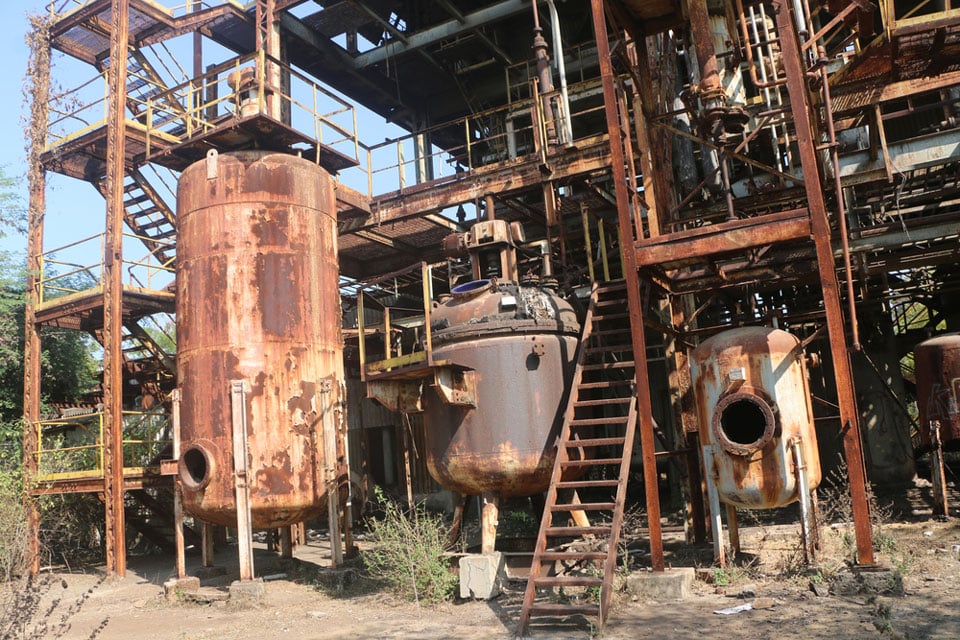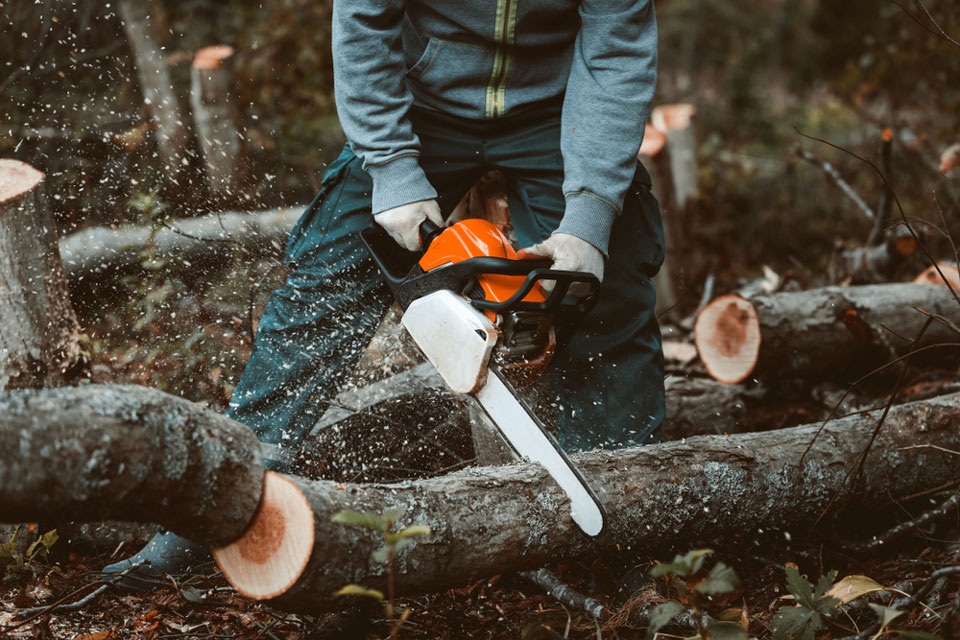Ranked: These Are The Most Dangerous Jobs in the World, 2023

Amid the vast range of occupations, some jobs are inherently more perilous than others. In this article, we delve into the most hazardous jobs in the world, where individuals put their lives on the line for a living. These are the jobs that require a significant amount of courage, skill, and resilience to undertake, where the slightest mistake or misjudgment can result in severe injury or even death. We examine the unique challenges and risks that come with each of these jobs, shedding light on the extraordinary individuals who perform them.
For anyone searching for swift understanding, we have condensed the list to the “26 Most Dangerous Occupations in the Globe”. In a world that’s increasingly anxious about safety, some careers continue to defy the standard, necessitating people to face life-threatening predicaments regularly. From heroic firefighters struggling with massive blazes to fearless deep-sea fishers confronting the merciless seas, these occupations test organizations and businesses to make sure the highest safety measures, not allowing any chance for carelessness.
Historical Examples of Negligence Impacting Worker Safety:
The Triangle Shirtwaist Factory disaster in New York City on 25 March 1911 is a painful reminder of the devastation that can occur when corporate interests take precedence over employee safety. The owners, Max Blanck and Isaac Harris, prioritized financial gain over worker protection, resulting in 146 casualties, most of whom were young immigrant women, caused by a lack of proper fire escape routes and fire-fighting equipment.

Similarly, the Bhopal Gas Tragedy in India in 1984 stands as one of the worst industrial disasters ever. The negligence of Union Carbide, an American chemical company, in maintaining safety standards, equipment upkeep, and employee training led to a massive gas leak, resulting in thousands of deaths and lifelong health issues for survivors. These tragic events underscored the dire need for stringent safety measures and corporate accountability.

Most Dangerous Jobs in the World
- Logging Workers
Fatal Injury Rate: 111 per 100,000
Logging workers operate heavy machinery in steep and uneven terrain, handling chainsaws and falling trees. The potential for equipment malfunctions, unpredictable weather, and the weight of massive logs makes this the most dangerous job in the world, with the highest fatal injury rate.
- Aircraft Pilots and Flight Engineers
Fatal Injury Rate: 53 per 100,000
Aircraft pilots and flight engineers have a challenging and hazardous job, responsible for passengers’ lives, complex machinery, and unpredictable weather conditions. Navigating intricate systems and managing emergencies is critical for safe flights. - Derrick Operators in Oil, Gas, and Mining
Fatal Injury Rate: 46 per 100,000
Derrick operators in oil, gas, and mining work with towering structures and heavy equipment, often in remote and harsh environments. Handling volatile materials and machinery leads to risks of explosions, equipment failures, and environmental hazards. - Roofers
Fatal Injury Rate: 41 per 100,000
Roofers face the danger of working at heights, handling heavy materials, and dealing with extreme weather conditions. Falls, accidents with tools and equipment, and structural collapses are common risks. - Garbage Collectors
Fatal Injury Rate: 34 per 100,000
Garbage collectors work in traffic, often in poorly lit conditions, handling heavy and hazardous waste. Accidents involving trucks, falls, and exposure to toxic materials can result in injuries and fatalities. - Iron Workers
Fatal Injury Rate: 29 per 100,000
Ironworkers operate at heights on construction sites, handling heavy materials, welding, and machinery. Falls, structural collapses, and material mishandling contribute to the high fatality rate in this profession. - Delivery Drivers
Fatal Injury Rate: 27 per 100,000
Delivery drivers, often working alone, face road accidents due to frequent driving and delivery pressures, potentially leading to unsafe driving practices. They also encounter potentially dangerous situations during deliveries. - Farmers, Ranchers, and Other Agricultural Managers
Fatal Injury Rate: 26 per 100,000
Agricultural workers face accidents involving heavy machinery, exposure to pesticides and fertilizers, and the dangers of handling livestock. Working in remote areas and harsh weather conditions can further complicate access to emergency healthcare. - Firefighting Supervisors
Fatal Injury Rate: 20 per 100,000
Firefighting supervisors lead teams battling fires, exposing themselves to rapidly changing fire conditions, smoke inhalation, collapsing structures, and extreme heat. In 2019, there were 8 recorded fatal injuries in this perilous profession. - Electric Power Linemen
Fatal Injury Rate: 20 per 100,000
Power linemen work with high-voltage electricity, face unpredictable weather, and risk falls. One misstep can result in electrocution, severe injuries, or death. Fortunately, in 2019, there were no recorded fatal injuries despite the job’s inherent dangers. - Crossing Guards
Fatal Injury Rate: 19 per 100,000
Near moving vehicles, crossing guards are responsible for pedestrian safety, facing risks from distracted drivers, harsh weather, and unpredictable pedestrian behavior. - Crane Operators
Fatal Injury Rate: 19 per 100,000
Crane operators face risks of accidents such as collapses, load failures, and contact with power lines. Operator errors, equipment malfunctions, or adverse weather conditions can lead to deadly incidents. - Construction Helpers
Fatal Injury Rate: 18 per 100,000
Exposure to heavy machinery, heights, and hazardous materials puts construction helpers at risk of falls, equipment accidents, and chemical exposure. - Highway Maintenance Workers
Fatal Injury Rate: 18 per 100,000
Highway maintenance workers operate in fast-moving traffic, and extreme weather conditions, and handle heavy machinery and hazardous materials, requiring constant vigilance and manual labor. - Landscaping Supervisors
Fatal Injury Rate: 18 per 100,000
Landscaping supervisors oversee outdoor projects involving heavy machinery, tree work, and pesticide use while coordinating activities in potentially risky environments. - Cement Masons
Fatal Injury Rate: 17 per 100,000
Cement masons deal with heavy lifting, toxic materials, and adverse weather conditions. Physical stamina, concrete finishing skills, and strict safety measures are essential to prevent injuries. - First-Line Supervisors of Mechanics, Installers, and Repairers
Fatal Injury Rate: 15 per 100,000
Supervisors overseeing hazardous industrial machinery and operations must ensure safety protocols are followed to prevent accidents and injuries among the workers they oversee. - Small Engine Mechanics
Fatal Injury Rate: 15 per 100,000
Small engine mechanics work with volatile fuels, sharp tools, and intricate machinery in cramped spaces, demanding technical expertise, precision, and safety precautions. - Grounds Maintenance Workers
Fatal Injury Rate: 14 per 100,000
Ground maintenance workers face dangers from car accidents while traveling to job sites and work-related falls, slips, and trips, making it one of the most dangerous jobs globally. - Police Officers
Fatal Injury Rate: 14 per 100,000
Police officers face potentially life-threatening situations while enforcing the law, often involving armed confrontations due to widespread firearm use, contributing to their high fatality rate. - General Maintenance and Repair Workers
Fatal Injury Rate: 14 per 100,000
Repair and maintenance work exposes workers to toxic materials and heavy machinery, sometimes at elevated heights, increasing the risk of accidents due to inadequate training and equipment malfunctions. - Heavy Vehicle Mechanics
Fatal Injury Rate: 14 per 100,000
Handling heavy machinery, chemicals, and high-pressure equipment, heavy vehicle mechanics risk crushing injuries, burns, and exposure to harmful substances, especially in tight spaces or at heights. - Construction Workers
Fatal Injury Rate: 13 per 100,000
Construction workers face dangers like falls from heights, machinery accidents, electrical shocks, and toxic exposure. Inadequate safety measures and rushed deadlines contribute to fatalities. - Mining Machine Operators
Fatal Injury Rate: 11 per 100,000
Working in confined, unstable underground environments with heavy machinery, explosives, and toxic gasses, mining machine operators demand precision, vigilance, and strict adherence to safety protocols. - Carpenters
Fatal Injury Rate: 8 per 100,000
Carpenters frequently work with heavy machinery, power tools, and at heights, leading to potential injuries from falls, electrical accidents, equipment malfunctions, and inadequate safety measures. - Security Guard
Fatal Injury Rate: 7 per 100,000
Security guards often work in high-risk environments such as banks or nightclubs, facing potential threats like theft and violence. Limited access to advanced training and protective gear increases their vulnerability.
The hazardous nature of these occupations necessitates that we recognize and honor the bravery and dedication of those who fill these roles. Despite advances in safety regulations, many of these jobs remain hazardous. To ensure these workers can operate with the highest degree of security and protection, organizations and government officials must make safety their top priority. We must work together to ensure these careers are as safe as possible for all those who choose them.
Have you read?
The World’s Top 10 Highest-Paid Wealth Management Executives.
CEO compensation: Highest paid chief executive officers in the United States.
Highest-paid Entertainment Chief Executives (Averaged $31.66 Million).
Highest-paid health insurance CEOs.
Most Powerful Companies in Australia.
Bring the best of the CEOWORLD magazine's global journalism to audiences in the United States and around the world. - Add CEOWORLD magazine to your Google News feed.
Follow CEOWORLD magazine headlines on: Google News, LinkedIn, Twitter, and Facebook.
Copyright 2025 The CEOWORLD magazine. All rights reserved. This material (and any extract from it) must not be copied, redistributed or placed on any website, without CEOWORLD magazine' prior written consent. For media queries, please contact: info@ceoworld.biz








